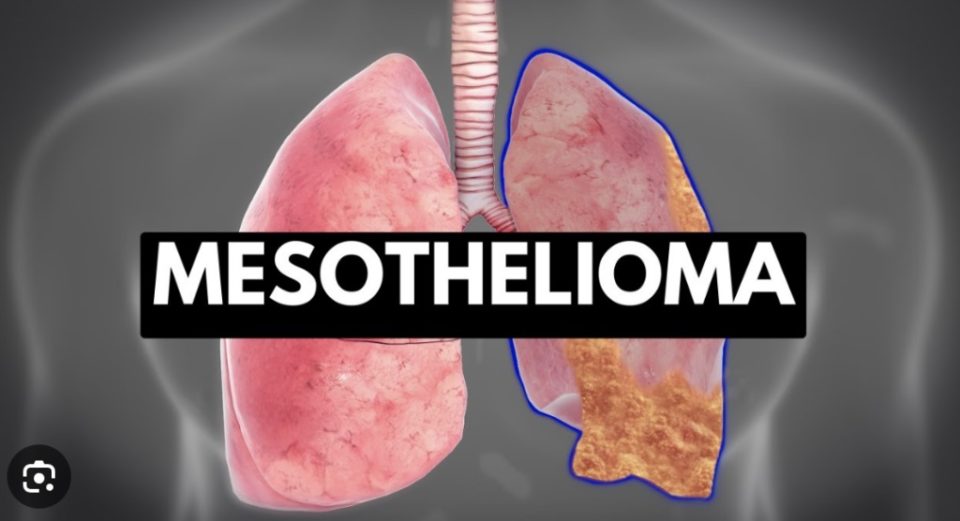Understanding Asbestos Exposure
Asbestos exposure occurs when individuals inhale or ingest asbestos fibers, which can lodge in the lungs, causing health issues such as lung cancer. Common sources of exposure include occupational environments and household settings. Understanding where and how exposure happens is critical for lung cancer claims.
Occupational Exposure
Many people encountered asbestos at work, especially those in construction, shipbuilding, and manufacturing. For instance, construction workers often dealt with materials containing asbestos, like insulation and roofing. Even those in non-asbestos industries, such as firefighters or automotive mechanics, faced exposure risks through equipment and facilities.
| Industry | Example Exposure Source |
| Construction | Insulation, roofing materials |
| Shipbuilding | Engine rooms, boiler rooms |
| Manufacturing | Asbestos-containing products |
| Firefighting | Protective gear, building materials |
| Automotive | Brake pads, clutches |
Household Exposure
Asbestos was present in numerous household products, making home environments potential sources of exposure. Homes built before the 1980s often used asbestos in flooring, ceiling tiles, and insulation. Renovations or deterioration of these materials released fibers into the air.
Environmental Exposure
Regions with natural asbestos deposits or industrial sites with asbestos use posed environmental exposure risks. Asbestos mining areas and factories frequently contaminated surrounding air and soil, affecting nearby residents.
Identification of these sources is key for substantiating lung cancer claims. Accurate evidence collection helps establish the link between asbestos exposure and lung cancer. Knowledge of potential sources empowers individuals to trace and document their exposure history effectively.
Common Sources of Asbestos Exposure
Lung cancer claims often arise from various asbestos exposure sources. Identifying these sources is crucial for substantiating claims.
Occupational Exposure
Occupational settings are a primary source of asbestos exposure. Workers in industries such as construction, shipbuilding, and manufacturing encountered significant asbestos use.
- Construction Workers: Often exposed to asbestos in building materials like insulation, roofing, and flooring.
- Shipbuilders: Experienced asbestos in ship components, including engine rooms and insulation.
- Manufacturing Workers: Faced exposure from asbestos used in products like brakes and gaskets.
Environmental Exposure
Environmental exposure occurs near natural deposits and industrial sites.
- Natural Deposits: Areas with asbestos-rich soil can release fibers into the air.
- Industrial Sites: Surrounding communities may experience contamination from asbestos-related manufacturing activities.
Secondary Exposure
Secondary exposure affects individuals who weren’t directly involved with asbestos-containing materials yet came into contact with fibers indirectly.
- Family Members: Workers could bring asbestos fibers home on clothing, affecting household members.
- Residents: Living in buildings with asbestos-containing materials or nearby industrial sites might lead to exposure.
Identifying these sources aids in gathering evidence for lung cancer claims, ensuring that exposure routes are well-documented.
Key Industries and Occupations at Risk
Several industries and occupations pose a higher risk of asbestos exposure, notably affecting lung cancer claims. Identifying these critical sectors helps in understanding and proving exposure sources.
Construction Workers
Construction workers face significant risks due to asbestos presence in building materials. Asbestos-containing products such as insulation, roofing shingles, and drywall were common in older buildings. Tasks like demolition, renovation, or repair can release asbestos fibers, putting workers in danger of inhaling these harmful particles. Upper-level managers and safety officers must ensure proper protective measures to minimize exposure.
Shipyard Workers
Shipyard workers are at high risk due to asbestos use in shipbuilding materials. Asbestos was extensively used for insulation and fireproofing in ships, creating dangerous working conditions. Tasks involving the repair or dismantling of older vessels can disturb asbestos fibers, exposing workers to potential health hazards. Long-term exposure in shipyards has led to numerous asbestos-related lung cancer cases.
Asbestos Manufacturing
Employees in asbestos manufacturing facilities directly handle asbestos materials, which significantly increases their exposure risk. These facilities produce items such as asbestos cement, textiles, and friction products. While handling raw asbestos and manufacturing products, workers can release fibers into the air, leading to inhalation hazards. Despite modern regulations, older facilities may still pose risks if regulations were lax during previous operational years. Proper documentation of manufacturing processes can help substantiate exposure claims.
Legal Aspects of Lung Cancer Claims
Legal experts play a crucial role in lung cancer claims related to asbestos exposure. Victims must navigate complex legal requirements to seek compensation.
Proving Exposure
Proving exposure involves presenting clear evidence that asbestos contact directly contributed to lung cancer. Victims need to document all potential sources of exposure. This could include employment records, job descriptions, and witness statements from coworkers. Proper identification of asbestos-containing products used and their manufacturers is essential. If exposure is non-occupational, evidence can include home construction records or proof of residence near asbestos sites.
Role of Medical Evidence
Medical evidence is vital in linking asbestos exposure to lung cancer. Essential documentation includes pathology reports, lung biopsies, and imaging studies. Oncologist expert testimony can substantiate claims, explaining the correlation between asbestos fibers and malignant cells. Clinical records showing asbestos-related conditions, such as asbestosis or pleural plaques, strengthen the connection.
Statute of Limitations
The statute of limitations restricts the time frame within which victims can file asbestos-related lung cancer claims. This period can vary by jurisdiction, often ranging from 1 to 6 years post-diagnosis. Exceptions can exist in cases of delayed discovery, where symptoms manifest long after exposure. It’s crucial to understand and comply with these timelines to avoid claim dismissal. Legal consultation ensures adherence to relevant statutes and maximizes the likelihood of a successful claim.
Identifying and Documenting Exposure
Accurate identification and thorough documentation of asbestos exposure sources are crucial for substantiating lung cancer claims. This section outlines key steps in the process.
Collecting Work History
Detailed work history is essential for identifying potential exposure to asbestos. Individuals should gather:
- Employment Records: Include dates of employment, job titles, and specific workplaces.
- Job Descriptions: Outline tasks and materials handled, especially in industries like construction, shipbuilding, and manufacturing.
- Union Records: Provide additional verification of employment and potential exposure scenarios.
Witness Testimonies
Witness testimonies can strengthen claims by corroborating exposure details:
- Coworker Statements: Provide firsthand accounts of the work environment and the presence of asbestos.
- Supervisor Testimonies: Validate job duties and asbestos-related incidents.
- Family Member Accounts: Support secondary exposure claims through observations of asbestos fibers brought home on clothing.
- Pathology Reports: Confirm lung cancer diagnosis and note presence of asbestos fibers in lung tissue.
- Medical History: Document respiratory issues, asbestos exposure, and corresponding diagnoses.
- Expert Testimony: Garner support from medical professionals who can establish the causal relationship between exposure and lung cancer.
Consulting a Specialist
Consulting a specialist is essential for individuals pursuing lung cancer claims related to asbestos exposure. Specialists, particularly pulmonologists and oncologists, provide invaluable medical insights into the correlation between asbestos fibers and lung cancer. These medical experts conduct comprehensive examinations, including imaging tests and biopsies, to establish a robust medical foundation for the claim.
Pulmonologists, whose expertise lies in respiratory health, offer detailed assessments of lung function and identify asbestos-related abnormalities. They use diagnostic tools such as chest X-rays, CT scans, and pulmonary function tests to detect changes indicative of asbestos exposure.
Oncologists, focused on cancer treatment, play a critical role in confirming lung cancer diagnoses and determining if asbestos exposure is a contributing factor. They evaluate tissue samples through biopsies and generate pathology reports that can substantiate the presence of asbestos fibers in lung tissues. This evidence is crucial for linking the cancer to asbestos exposure.
Industrial hygienists, often working alongside medical specialists, assess the extent of asbestos exposure in occupational and environmental settings. They analyze materials and environments, providing detailed reports on contamination levels. These reports assist in establishing where and how exposure occurred, bolstering the victim’s claim.
Legal experts, skilled in asbestos-related litigation, recommend consulting medical specialists early in the claims process. Medical testimony strengthens the causation argument, facilitating the link between asbestos exposure and lung cancer. This multidimensional approach ensures claimants have the robust evidence necessary for successful litigation.
Conclusion
Accurately identifying and documenting asbestos exposure sources is critical for substantiating lung cancer claims. Victims face significant challenges in pinpointing exposure due to asbestos’s widespread historical use. Occupational, environmental, and secondary exposures each present unique risks and require thorough documentation.
Legal experts play a vital role in navigating complex claim processes. Clear evidence, including employment records, witness statements, and medical documentation, is essential. Consulting medical specialists like pulmonologists and oncologists strengthens the causation argument, while industrial hygienists assess exposure levels.
Early and comprehensive documentation, along with expert consultation, enhances the likelihood of successful lung cancer claims related to asbestos exposure.
Health Links
- Mayo Clinic
- Ferrell Law Group
- Lanier Law Group
- Lung Cancer Group
- Weitz and Luxenberg
- American Cancer Society

